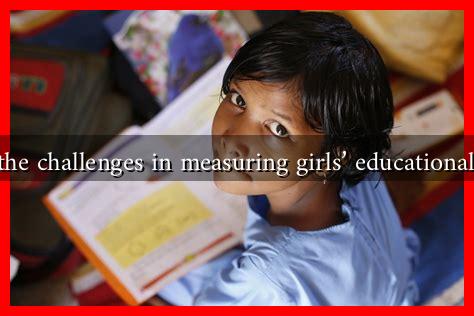-
Table of Contents
What are the Challenges in Measuring Girls’ Educational Progress?
Education is a fundamental human right, yet millions of girls around the world face significant barriers to accessing quality education. While there has been progress in recent years, measuring the educational progress of girls remains fraught with challenges. This article explores the various obstacles that hinder accurate assessment and understanding of girls’ educational achievements.
Understanding the Context
Before delving into the challenges, it is essential to understand the context in which girls’ education operates. Globally, girls are often disadvantaged due to socio-economic factors, cultural norms, and systemic inequalities. According to UNESCO, approximately 129 million girls are out of school, and many who do attend face barriers that affect their educational outcomes.
Challenges in Data Collection
One of the primary challenges in measuring girls’ educational progress is the lack of reliable data. Several factors contribute to this issue:
- Inconsistent Data Sources: Different countries and organizations may use varying definitions and metrics for educational attainment, leading to inconsistencies in data.
- Underreporting: In many regions, especially in rural areas, girls’ education is underreported due to cultural stigmas or lack of awareness about the importance of education.
- Access to Technology: In the digital age, access to technology is crucial for data collection. However, girls in many parts of the world lack access to the internet and digital tools, making it difficult to gather accurate information.
Socio-Cultural Barriers
Socio-cultural factors play a significant role in shaping girls’ educational experiences. These barriers can skew the measurement of educational progress:
- Gender Bias: In many cultures, there is a prevailing belief that boys’ education is more valuable than girls’. This bias can lead to fewer resources being allocated to girls’ education, affecting their progress.
- Early Marriage and Pregnancy: In some regions, girls are married off at a young age or face early pregnancies, which often leads to dropping out of school. This phenomenon is difficult to quantify but significantly impacts educational progress.
- Safety Concerns: Issues such as harassment and violence in schools can deter girls from attending or continuing their education, making it challenging to measure their true educational progress.
Quality of Education
Measuring educational progress is not solely about enrollment numbers; it also involves assessing the quality of education received. Several factors complicate this assessment:
- Curriculum Relevance: In many regions, the curriculum may not be relevant to girls’ lives or future opportunities, leading to disengagement and poor performance.
- Teacher Training: A lack of trained teachers who understand gender-sensitive pedagogy can hinder girls’ learning experiences and outcomes.
- Resource Allocation: Schools in low-income areas often lack basic resources, such as textbooks and safe facilities, which can affect girls’ educational progress.
Case Studies and Statistics
Several case studies highlight the challenges in measuring girls’ educational progress:
- Sub-Saharan Africa: According to the World Bank, girls in Sub-Saharan Africa are 1.5 times more likely to be out of school than boys. This disparity is often exacerbated by cultural norms that prioritize boys’ education.
- South Asia: A study by the Malala Fund found that 40% of girls in South Asia are married before the age of 18, significantly impacting their educational opportunities.
- Middle East and North Africa: The Global Education Monitoring Report indicates that girls in conflict-affected areas are 90% more likely to be out of school than boys, highlighting the impact of instability on educational progress.
Conclusion
Measuring girls’ educational progress is a complex endeavor influenced by various factors, including data collection challenges, socio-cultural barriers, and the quality of education. Addressing these challenges requires a multi-faceted approach that includes:
- Improving data collection methods to ensure accurate and comprehensive information.
- Implementing community awareness programs to change cultural perceptions about girls’ education.
- Investing in teacher training and resources to enhance the quality of education for girls.
By recognizing and addressing these challenges, stakeholders can work towards creating a more equitable educational landscape for girls worldwide. For further insights on this topic, you can visit UNESCO’s Education page.


